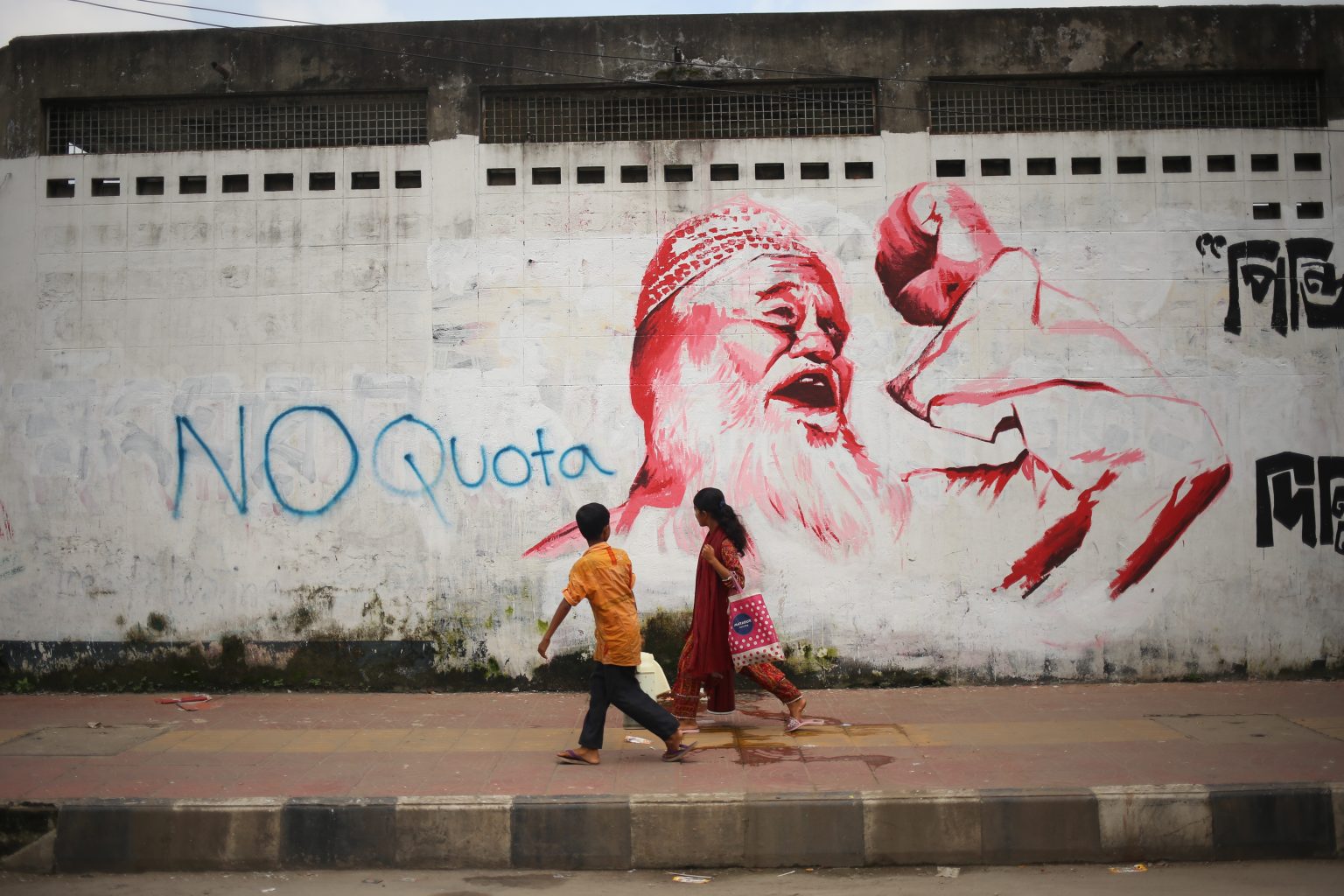Despite a strict nationwide curfew and the heavy presence of armed forces, protestors returned to the streets on July 20, 2024, in defiance of state-imposed restrictions. The office of former Prime Minister Sheikh Hasina had declared July 20 and 21 as general public holidays the previous evening, yet the curfew—imposed amid a spiraling political and human rights crisis—remained in effect.
With the internet completely shut down across the country, an unsettling silence settled in. An air of quiet terror hung heavy. Fear and uncertainty gripped citizens who relied on sporadic phone calls to share news of unrest, bloodshed, and disappearances. Despite the blackout, reports of escalating violence managed to spread. At least 21 people were reportedly killed on July 20 alone—the first full day of curfew and active army deployment—bringing the estimated death toll that week to 133.
Military personnel with automatic rifles patrolled nearly every major neighborhood in Dhaka, turning familiar streets into scenes that looked eerily like battlefields from a video game. Markets, schools, and mosques—all usually lively with human movement—stood deserted, drowned in an uneasy quiet. It was a loud silence, one that seemed to echo with dread and resistance.
Television news stations reported that the curfew was eased for two hours at 10:00 AM to allow residents to purchase essentials. Even so, most streets remained empty. Yet in a dramatic show of defiance, thousands of protestors emerged in Dhaka’s Rampura area, shouting slogans and waving placards, their chants ringing through the air despite the threat of violence. Police reportedly opened fire on the crowd, injuring at least one demonstrator. Eyewitnesses claim the response was swift and brutal.
that night, Nahid Islam, a prominent student organizer and key figure in the Anti-Discrimination Student Movement, was abducted by plainclothes men from a house in Sabujbagh. Friends and family said they had no idea where he had been taken. A day later, Nahid was found unconscious beneath a bridge in Purbachal, his body covered in bruises. He alleges that he was blindfolded, transported to an unknown location, and tortured until he lost consciousness. He remained under medical care for several days following the incident.
Despite the city being on virtual lockdown, the road to Hazrat Shahjalal International Airport (DAC) remained open, and flights continued to operate on schedule. Embassies of several foreign countries issued statements advising their nationals to avoid large gatherings and stay indoors, while also reassuring that evacuation measures, if necessary, were being considered.
July 20 became a symbol of defiance and resilience. Even in the face of live ammunition, forced disappearances, and a digital blackout, the people’s will to protest—fueled by years of perceived injustice—proved unyielding. The crackdown continued, but so did the resistance.


